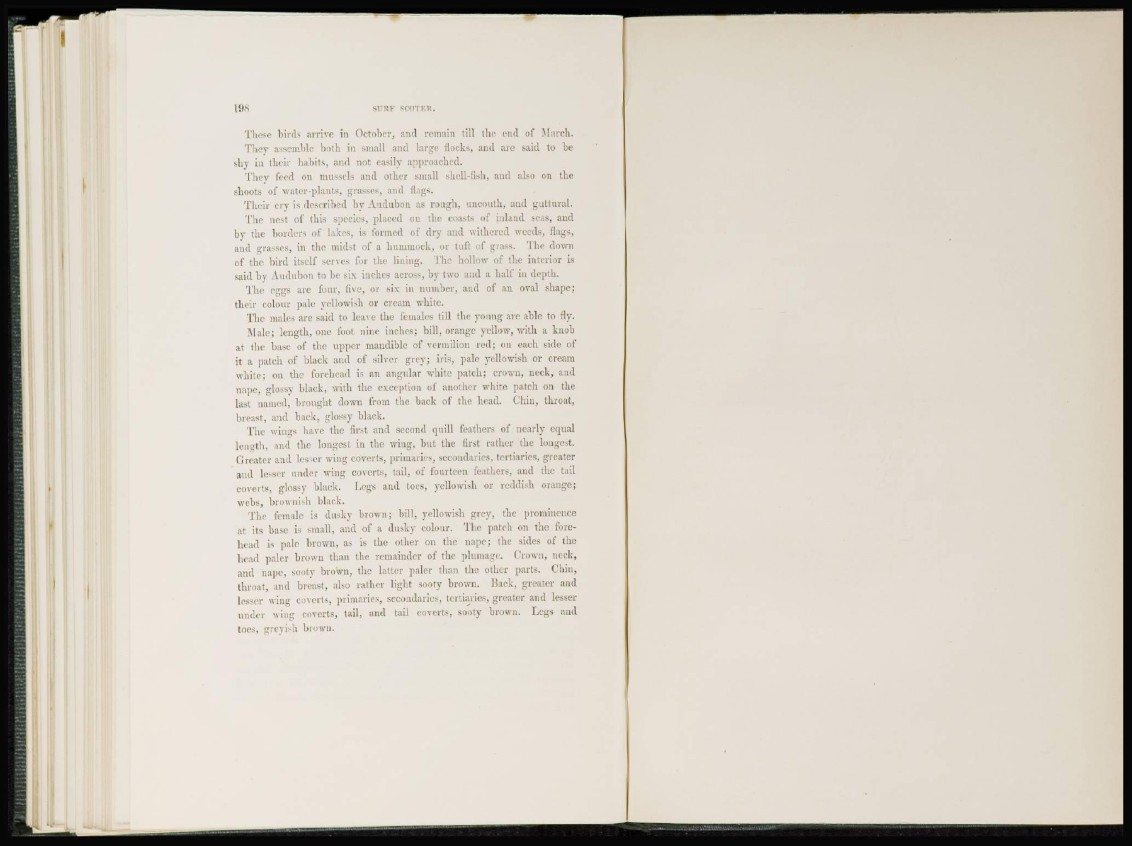
198 SVRV SCOTKK.
These birds arrive in October, and remain till the end of March.
They assemble both in small and large flocks, and are said to be
shy in their habits, and not easily approached.
They feed on mussels and other small s h e l l dish, and also on the
shoots of water-plants, grasses, and flags.
Their cry is described by Audubon as rough, uncouth, and guttural.
The nest of this species, placed on the coasts of inland seas, and
by the borders of lakes, is formed of dry and withered weeds, flags,
and grasses, in the midst of a hummock, or tuft of grass. The down
of the bird itself serves for the lining. The hollow of the interior is
said by Audubon to be six inches across, by two and a half in depth.
The eggs are four, five, or six in number, and of an oval shape;
their colour pale yellowish or cream white.
The males are said to leave the females till the young arc able to fly.
Male; length, one foot nine inches; bill, orange yellow, with a knob
at the base of the upper mandible of vermilion red; on each side of
it a patch of black and of silver grey; iris, pale yellowish or cream
white; on the forehead is an angular white patch; crown, neck, and
nape, glossy black, with the exception of another white patch on the
last named, brought down from the back of the head. Chin, throat,
breast, and back, glossy black.
The wings have the first and second quill feathers of nearly equal
length, and the longest in the wing, but the first rather the longest.
Greater and les-er wing coverts, primaries, secondaries, tertiaries, greater
and lesser under wing coverts, tail, of fourteen feathers, and the tail
coverts, glossy black. 1-cgs and toes, yellowish or reddish orange;
webs, brownish black.
The female is dusky brown; bill, yellowish grey, the prominence
at its base U small, and of a dusky colour. The patch on the forehead
is pale brown, as is the other on the nape; the sides of the
head paler brown than the remainder of the plumage. Crown, neck,
and nape, sooty brown, the latter paler than the other parts. Chin,
throat, and breast, also rather light sooty brown. Back, greater and
lesser wing coverts, primaries, secondaries, tertiaries, greater and lesser
under \vuig coverts, tail, and tail coverts, sooty brown. Legs and
top*, nrevish brown.